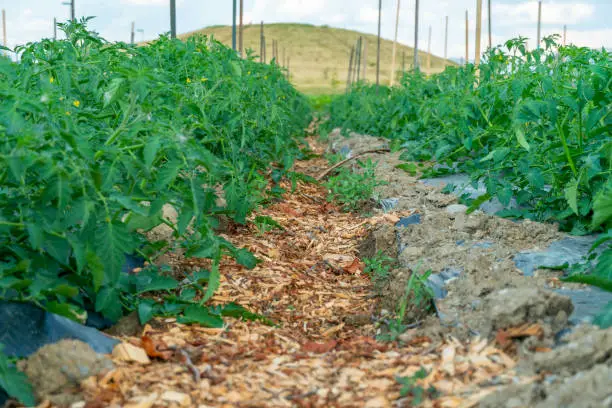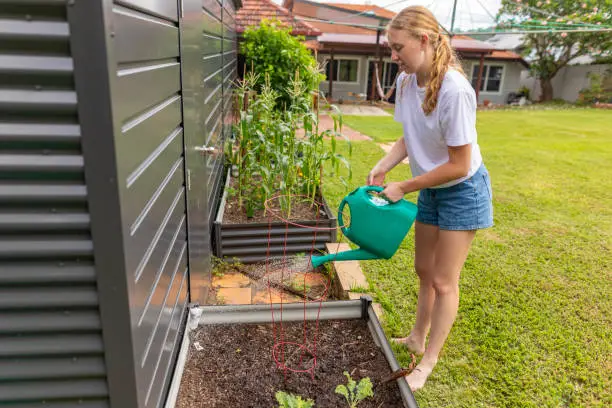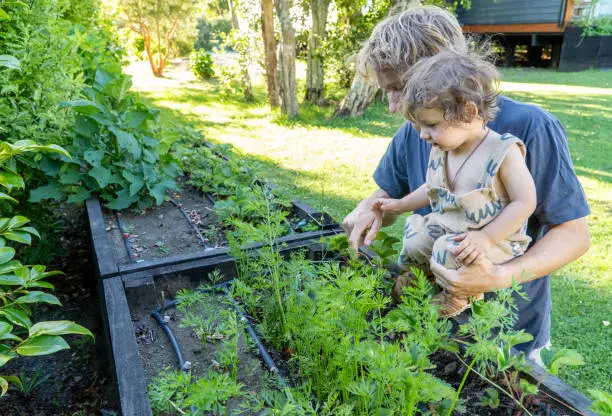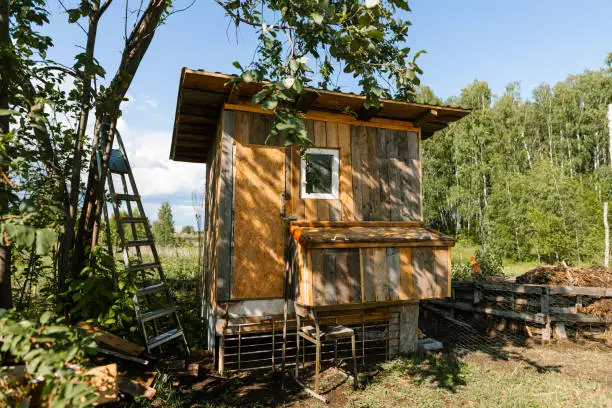Imagine a bright afternoon, bees buzzing, butterflies fluttering, and a blooming garden. Sounds like paradise. Plant flowers that attract these lovely pollinators to create this tiny paradise in your backyard homesteading. Here are some excellent selections to have your garden humming and fluttering quickly.
Lavender: Purple Magnet
Everyone loves lavender, the flower world’s Beyoncé. Its pleasant aroma attracts bees and butterflies. It also requires little upkeep. Plant it in well-drained, sunny soil, and you’re done. As a bonus, you can make sachets or cook with lavender.
Tall, seductive sunflowers
These majestic giants attract bees. Bees can land on their huge faces to collect nectar. Sunflowers attract butterflies looking for a bite before continuing their journey. Plant them along fences or behind garden beds for height and drama.
Coneflowers—Strong Beauty
Though resilient, coneflowers flourish in many environments. Their pink, purple, and white colors brighten any garden. Bees like their open structure for easy nectar access, and these robust blossoms attract butterflies, too.
Natural Lollipop: Bee Balm
Bee balm is pollinator candy. Its tubular blossoms allow bees to drink nectar, and its vibrant colors attract butterflies. Native Americans used this perennial to treat colds and illnesses.
Zinnias: Easygoing Charmers
Zinnias—easy to grow and rainbow-colored—are everyone’s laid-back pals. This annual blooms all summer, feeding bees and butterflies. They make great cutting gardens—snip a few stems for a bouquet.

Milkweed: Butterfly Buffet
Milkweed is essential for monarch butterflies in your garden. Monarchs lay their eggs on milkweed because their caterpillars only eat it—other butterflies like milkweed besides monarchs.
Golden Guardian Marigolds
Marigolds attract pollinators and deter aphids and nematodes with their pungent aroma. Their brilliant orange and yellow colors attract bees and butterflies seeking nectar.
Black-Eyed Susans: Stem Sunshine
Bright blooms are like suns in your yard. Black-eyed Susans’ copious nectar and robust petals make them good landing pads for bees and butterflies.
Wonders of Cosmos
Cosmos appear delicate, but they bloom till frost. Their daisy-like blossoms attract bees during the day and moths at night—a win-win!
Temptation of the Tropics
With their clusters of tiny orange, pink, red, and more flowers, lantanas add a tropical flair to any garden! Bees and butterflies love them.

Now for some gardening techniques to make your backyard more inviting:
Diversified Planting: Plant a variety of flowers to ensure seasonal flowering.
Water Source: A modest water dish can save you on scorching days.
Avoid pesticides: Use natural pest control to protect pollinators.
Native Plants: Local fauna prefers native plants to alien ones.
Deadheading: Regularly remove wasted blooms to promote fresh growth and additional bird visits!
Create a bee and butterfly sanctuary by carefully arranging your garden layout and plant selection.
Imagine sitting on your porch with tea (or something more substantial and watching nature’s little helpers fly from flower to flower—even! Roll up your sleeves, grab some gloves, and plant—let Mother Nature do her thing!
Creating a Pollinator Paradise in Your Backyard Homestead
Have you ever seen a bee hop from blossom to flower in your yard like it’s high on caffeine? Nature’s small worker bee: working. But guess what? Our buzzing friends need aid. How to make your backyard a pollinator paradise.
Consider your garden a five-star hotel for pollinators like bees, butterflies, and others. They should check in and always stay. Start with seasonal flowers. Thus, our feathered companions always have enough to eat. Entering a 24/7 all-you-can-eat buffet sounds delicious, right?
Not all flowers are equal. Some are like plant-based fast food—quick and convenient but not healthful. Other gourmet meals include all a pollinator needs. Native plants are excellent since they comfort local pollinators. Consider monarch milkweed or bee lavender.
You are talking about bees and their buzzers. Did you know there are over 20,000 species of bees? Not all live in hives or make honey. Some prefer to live alone in hollow stems or on the ground. Keep some soil bare, and only clean up some falling branches.
Butterflies are pollinators and garden beauties! Plant nectar-rich zinnias or coneflowers to attract these butterflies. Remember host plants where caterpillars can lay their eggs—they need to eat!
Birds also pollinate. Tubular flowers like trumpet vine and fuchsia attract hummingbirds. Miniature bird acrobats zoom around with lightning speed, eating nectar and dispersing pollen.
Another essential need in your pollinator refuge is water. A modest dish of water and pebbles satisfies insects and birds. Create a tiny oasis in your flowery desert.
Shelter is also essential for pollinators to avoid predators and harsh weather. A mound of boulders, dense grasses, or an old log can become great real estate.
Pesticides? If you want to protect pollinators, avoid this. Go natural with ladybugs eating aphids or companion planting to deter pests.
Have you considered beekeeping? It’s simpler than you think! The sale includes fresh honey, a win-win.
Do you have kids? Could you include them in this project? Pollinator education is enjoyable and educational for kids. They’ll like seeing butterflies emerge from chrysalises and different bees buzzing.
Everything depends on soil health. Kitchen scrap compost provides nutrient-rich soil that plants love and attracts pollinators.
Despite their terrible reputation, don’t pull out weeds! Dandelions and clover may be unsightly, but they save early-season bees when other blossoms are limited.
Have little room? No problem! Container gardens of insect-attracting plants like basil or mint may make tiny balconies lively.
Layer your garden with low-growing ground plants and towering sunflowers to give distinct homes for different animals.
Moths work just as well at night as they do in the sun!
Gardening promotes life in all its forms outside your home, not just beauty! Roll up your sleeves and plant today—every little bit helps keep our ecology healthy!
They were discussing bee buzzers. There are around 20,000 bee species. They don’t all dwell in hives or make honey. Some like hollow stems or the ground for solitude. Leave some soil untouched, and don’t pick up every branch.
Pollinators and garden beauty, butterflies! Plant zinnias or coneflowers with nectar to attract butterflies. Remember host plants where caterpillars can deposit eggs—they must eat!
Birds pollinate. Fuchsia and trumpet vines attract hummingbirds, and tiny all-bird acrobats munch on nectar and spread pollen quickly.
Your pollinator refuge needs water, too. A small dish of water and stones feeds insects and birds. Add a small oasis to your blooming desert.
Pollinators need shelter from predators and weather. A boulder mound, lush grasses, or ancient wood can be fantastic real estate.
Pesticides? Avoid this to preserve pollinators. Natural pest control using ladybugs eating aphids or companion planting.
Have you considered beekeeping? It’s easier than expected! The sale includes fresh honey, a win-win.
Do you have kids? Could you include them in this project? Pollinator education is fun and educational for kids. Bees buzzing and butterflies emerging from chrysalises will delight them.
It all depends on soil health. Plants and pollinators enjoy kitchen garbage compost’s nutrients.
Despite their bad reputation, don’t pluck weeds! Dandelions and clover are unattractive, yet they save early-season pollinators when other blooms are scarce.
Have little space? No problem! Container gardens with insect-attracting basil or mint may liven up small balconies.
Fill your garden with low-growing ground plants and tall sunflowers for different animal habitats.
Moths operate great at night and in the sun!
Gardening promotes life outside your home, not simply beauty! Just a tiny bit of gardening today helps our ecosystem!





Leave a Reply
You must be logged in to post a comment.